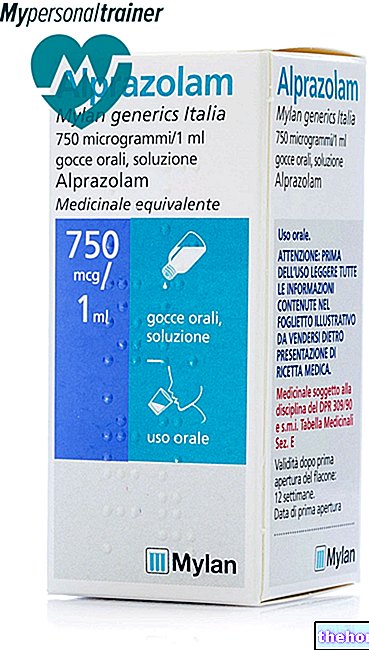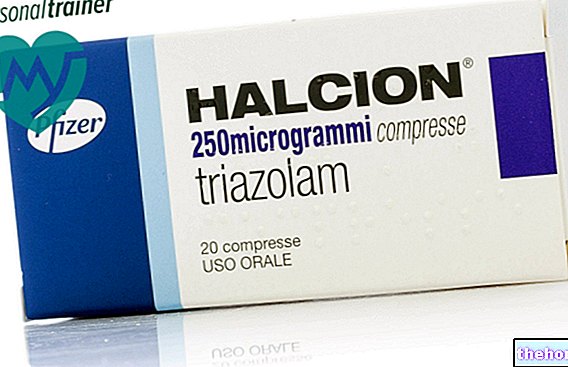Active ingredients: Diclofenac
Solaraze gel 3%
Indications Why is Solaraze used? What is it for?
Solaraze is a non-steroidal anti-inflammatory dermatological gel. Applied to the skin, Solaraze gel is used to treat a skin problem known as actinic or solar keratosis, caused by excessive exposure to the sun.
Contraindications When Solaraze should not be used
Do not use Solaraze
- If you are allergic to diclofenac or any of the other ingredients of Solaraze.
- If you have ever had allergic reactions such as skin rash (hives), difficulty breathing (wheezing) or runny nose (allergic rhinitis) after taking aspirin or other non-steroidal anti-inflammatory agents.
- If you are in the last trimester of pregnancy.
Precautions for use What you need to know before taking Solaraze
The possibility of systemic side effects with the application of Solaraze cannot be excluded if the product is used on large areas of skin and for a prolonged period.
Consult your doctor if:
- Have or have suffered in the past from stomach ulcers or bleeding,
- Have heart, liver or kidney problems,
- Suffering from some bleeding disorder or bruising very easily.
Avoid sun exposure and tanning lamps while using Solaraze. In case of skin reactions, discontinue use.
Do not apply to wounds, skin with infections or dermatitis.
Avoid getting Solaraze in your eyes or the inside of your nose or mouth and do not swallow it. If you accidentally swallow Solaraze, consult your doctor immediately.
If you get extensive rash, stop using Solaraze and consult your doctor.
A permeable (non-occlusive) dressing can be used after applying diclofenac-containing medicines to the skin. Do not use an occlusive dressing that does not let air through.
Warnings It is important to know that:
Pregnancy and breastfeeding
Tell your doctor if you are pregnant or think you are pregnant. Solaraze should be used with caution in the first six months of pregnancy, but should not be used in the last trimester of pregnancy.
Consult your doctor if you are breast-feeding. Solaraze can be used with caution during breastfeeding, but should not be applied to the breasts.
If you are pregnant, trying to get pregnant or breastfeeding, and your doctor deems this treatment appropriate, you should not apply Solaraze to more than one third of the skin and you should not use it for more than three weeks.
Ask your doctor or pharmacist for advice before taking any medicine.
Dose, Method and Time of Administration How to use Solaraze: Dosage
Solaraze is not suitable for children.
Use the gel as directed by your doctor.
Before use, pierce the aluminum membrane located on the opening of the tube with the tip of the cap.
Gently smear a small amount of gel on the skin in the area to be treated. The amount needed depends on the size of the area to be treated. Generally 0.5 grams of gel (the size of a pea) is sufficient to treat a 5x5 cm area, but no more than 8 grams should be applied per day.
Solaraze can be applied twice a day, unless otherwise directed by your doctor. When the gel is spread on the skin, a slightly cooling sensation can be felt.
The normal duration of therapy is 60-90 days. Maximum efficacy is achieved with treatment duration towards the higher level of this range. Complete recovery can occur up to one month after cessation of therapy.
After applying the gel, wash your hands, unless it is one of the areas to be treated.
If you forget to use Solaraze
Continue to apply it as directed, but do not apply a double dose to make up for the forgotten.
Overdose What to do if you have taken too much Solaraze
If you use more Solaraze than you should
Remove excess gel by washing with water.
Side Effects What are the side effects of Solaraze
Like all medicines, Solaraze can cause side effects, although not everybody gets them.
If you experience any of the following side effects, stop using Solaraze and tell your doctor as soon as possible:
rash (hives), difficulty breathing (wheezing), swelling of the face, runny nose (allergic rhinitis). These symptoms indicate a possible allergy to Solaraze.
If any of the common side effects listed below get severe or last more than a few days, stop using Solaraze and talk to your doctor: itching, rash, redness or inflammation of the skin, contact dermatitis, pain and formation of blisters.
Other common side effects (affects 1 to 10 users in 100):
- irritation or tingling of the treated area, conjunctivitis, allergy, painful sensation when touching the skin, tingling, muscle stiffness, dermatitis, eczema, dry skin, swelling, rash (including peeling and blistering), sagging skin and ulcers cutaneous.
Uncommon side effects (affects 1 to 10 users in 1,000):
- eye pain, watery / dry eyes, abdominal pain, diarrhea, feeling unwell, hair loss, swelling of the face, excessive bleeding or oily skin, measles-like rash.
Rare side effects (affects between 1 and 10 in 10,000 patients):
- dermatitis with large bubbles
Very rare side effects (affects less than 1 user in 10,000):
- stomach bleeding, kidney problems, difficulty breathing (asthma), infected skin rash, skin sensitivity to sunlight.
A "temporary discolouration of hair in the application area has been reported, which generally resolves when treatment is stopped.
Reporting of side effects
If you get any side effects, talk to your doctor or pharmacist. This includes any possible side effects not listed in this leaflet. You can also report side effects directly via the national reporting system at "www.agenziafarmaco.gov.it/it/responsabili." By reporting side effects you can help provide more information on the safety of this medicine.
Expiry and Retention
Keep out of the reach and sight of children.
Do not use after the expiry date (stated under "EXP") stated on the tube and carton. The expiry date refers to the last day of the month.
Do not store above 25 C.
Validity after first opening: 6 months.
Medicines should not be disposed of via wastewater or household waste. Ask your pharmacist how to throw away medicines you no longer use. This will help protect the environment.
Other information
What Solaraze contains
- Each gram of gel contains the equivalent of 30 mg of diclofenac sodium (the active ingredient).
- The gel also contains sodium hyaluronate, benzyl alcohol, macrogol monomethylether 350 and purified water.
Description of Solaraze's appearance and contents of the package
Solaraze gel is a clear, transparent, colorless or pale yellow gel, packaged in tubes containing 25, 50, 60, 90 or 100 grams of product.
Source Package Leaflet: AIFA (Italian Medicines Agency). Content published in January 2016. The information present may not be up-to-date.
To have access to the most up-to-date version, it is advisable to access the AIFA (Italian Medicines Agency) website. Disclaimer and useful information.
01.0 NAME OF THE MEDICINAL PRODUCT
SOLARAZE 3% GEL
02.0 QUALITATIVE AND QUANTITATIVE COMPOSITION
Each gram of product contains 30 mg of sodium diclofenac (weight / weight ratio: 3% w / w).
For excipients see 6.1
03.0 PHARMACEUTICAL FORM
Gel
Clear, transparent, colorless or pale yellow gel.
04.0 CLINICAL INFORMATION
04.1 Therapeutic indications
Treatment of actinic keratosis
04.2 Posology and method of administration
Adults: Solaraze should be applied locally on the skin twice a day and gently massaged to favor its absorption. The amount required depends on the size of the lesion. Generally 0.5 grams (the size of a pea) of gel is sufficient for an injured area. of 5x5 cm. The normal duration of therapy is from 60 to 90 days. The maximum efficacy is obtained with a duration of treatment towards the highest level of this range. Complete wound healing or optimal therapeutic effects may be evident 30 days after cessation of therapy. The maximum limit of 8 grams per day should not be exceeded. Long-term efficacy has not been established.
Elderly: the normal adult dose.
Children: The doses and indications for the use of Solaraze in children have not been established.
04.3 Contraindications
Solaraze is contraindicated in patients with known hypersensitivity to diclofenac, benzyl alcohol, macrogol monomethylether 350 and / or sodium hyaluronate.
Due to cross-reactions, the gel should not be used in patients who have experienced hypersensitivity reactions, with symptoms such as asthma, allergic rhinitis or urticaria, to acetylsalicylic acid or other non-steroidal anti-inflammatory agents.
The use of Solaraze is contraindicated in the third trimester of pregnancy (see Section 4.6)
04.4 Special warnings and appropriate precautions for use
Due to the low systemic absorption of Solaraze, the likelihood of systemic side effects occurring following topical application of Solaraze is low compared to the frequency with which side effects occur with orally administered diclofenac. However, the possibility of adverse events systemic with the application of topical diclofenac cannot be excluded if the preparation is used on large skin areas and for a prolonged period (see information on systemic forms of diclofenac). This product should be used with caution in patients with a history of and / or active gastrointestinal ulcers or bleeding and in patients with impaired cardiac, renal or liver function as isolated cases of systemic adverse reactions consisting of renal disease have been reported in patients following administration. topical of antiphlogistics.
NSAIDs are known to interfere with platelet function. Although the probability of systemic side effects is very low, caution is required in the use of the product in patients with intracranial haemorrhage and haemorrhagic diathesis.
Direct exposure to the sun, including solariums, should be avoided during treatment. If any reactions due to skin sensitivity occur, discontinue treatment.
The application of Solaraze to wounds, infections and exfoliative dermatitis should be avoided. The product must be prevented from coming into contact with the eyes or mucous membranes; it must not be ingested.
Discontinue treatment if skin rash develops after application of the product.
Topical diclofenac can be used with non-occlusive dressings, but should not be used with an occlusive dressing that does not allow air to pass.
04.5 Interactions with other medicinal products and other forms of interaction
Given that the systemic absorption of diclofenac from a topical application is very low, such interactions are very unlikely.
04.6 Pregnancy and breastfeeding
Use in pregnancy : The systemic concentration of diclofenac is lower after topical administration than that of oral formulations. With reference to the experience with systemic NSAIDs, it is recommended:
• Inhibition of prostaglandin synthesis may adversely affect pregnancy and / or fetal development. Epidemiological studies suggest an increased risk of spontaneous abortion, cardiac malformations and gastroschisis after the use of prostaglandin synthesis inhibitors in early pregnancy. The absolute risk of cardiac malformations increased from less than 1% to approximately 1.5%. The risk is believed to increase with dose and duration of therapy.
• Studies in animals have shown reproductive toxicity. In animals, administration of prostaglandin synthesis inhibitors resulted in increased pre- and post-implantation losses and embryo-fetal mortality. Furthermore, by administering prostaglandin synthesis inhibitors to animals in the organogenetic period, there was an increase in the incidence of various malformations, including cardiovascular ones.
In the first and second trimester of pregnancy, diclofenac should not be taken unless clearly needed. If diclofenac is taken by women attempting to conceive or who are in the first and second trimester of pregnancy, the dose should be kept low (body surface area) and the duration of treatment as short as possible (no more than three weeks).
In the second and third trimester of pregnancy, all prostaglandin synthesis inhibitors can cause in the fetus:
• damage to kidney function. From week 12: oligohydramniosis (usually reversible after discontinuation of therapy) or anamniosis (particularly associated with prolonged exposure). After birth: renal insufficiency may persist (particularly following delayed and prolonged exposure).
• Pulmonary and cardiac toxicity in the fetus (pulmonary hypertension with premature closure of the arterial duct). The risk exists from the beginning of the 6th month and increases if the administration is near the end of the pregnancy.
In the third trimester of pregnancy, all prostaglandin synthesis inhibitors can expose the mother and infant to:
• Possible prolongation of bleeding time, antiplatelet effect which can occur even at very low doses.
• Inhibition of uterine contractions resulting in delayed or prolonged labor.
• Increased risk of edema for the mother.
Consequently, Solaraze is contraindicated during the third trimester of pregnancy (see section 4.3).
Use while breastfeeding Like other NSAIDs, diclofenac passes into breast milk in small amounts. However, at the therapeutic doses recommended for Solaraze, no effects on the infant are anticipated. Due to the lack of controlled studies in breastfeeding women, Solaraze should only be used in breastfeeding women on the advice of a doctor. In this case, Solaraze should not be applied to the skin area of the breast of mothers during the lactation period, nor to other large skin areas nor for prolonged periods (see section 4.4).
04.7 Effects on ability to drive and use machines
The cutaneous application of topical diclofenac does not affect the ability to drive or use machines.
04.8 Undesirable effects
The most frequently reported reactions include localized skin reactions such as contact dermatitis, erythema and rash or application site reactions such as inflammation, irritation, pain and blistering. The studies conducted did not show an age-specific increase or trend in reactions.
Adverse reactions are reported (Table 1) in order of decreasing severity according to the following convention: very common (≥1 / 10); common (≥1 / 100 to
Table 1
A "temporary discolouration of hair in the application area has been reported, which generally resolves when treatment is stopped.
Patch tests conducted on patients undergoing previous therapy indicate that the probability of allergic contact dermatitis due to sensitization (type IV) to diclofenac is 2.18%; the clinical significance of these findings is unknown. Cross-reactivity with other NSAIDs is unlikely. Serum tests conducted on over 100 patients indicate the absence of anti-diclofenac type I antibodies.
Reporting of suspected adverse reactions.
Reporting of suspected adverse reactions occurring after authorization of the medicinal product is important as it allows continuous monitoring of the benefit / risk balance of the medicinal product. Healthcare professionals are asked to report any suspected adverse reactions via the national reporting system. "address" www.agenziafarmaco.gov.it/it/responsabili ".
04.9 Overdose
Thanks to the low systemic absorption rate of Solaraze, the chances of overdose resulting from topical use are very unlikely. However, the skin will need to be rinsed with water. There have been no clinical cases of ingestion of Solaraze which resulted in overdose.
In case of accidental ingestion (100 g of Solaraze gel contains 3000 mg of diclofenac sodium) with consequent significant systemic side effects, the general therapeutic measures normally adopted in the treatment of poisonings with non-steroidal anti-inflammatory drugs should be taken.
In the event of complications such as renal failure, seizures, gastrointestinal irritation and respiratory depression, the patient should undergo supportive and symptomatic treatment of vital functions. In particular, gastric decontamination and the use of activated charcoal must be considered within a short time after ingestion.
Certain therapies, such as forced diuresis and dialysis are unlikely to have therapeutic effects in the elimination of non-steroidal anti-inflammatory drugs due to the high binding power of plasma proteins.
05.0 PHARMACOLOGICAL PROPERTIES
05.1 Pharmacodynamic properties
Pharmacotherapeutic group: Other dermatologicals
ATC code: D11AX18
Mechanism of action: diclofenac is a non-steroidal anti-inflammatory drug, whose mechanism of action in actinic keratosis is unknown, but which may be related to the inhibition of the cyclooxygenase pathway, resulting in reduced synthesis of prostaglandin E2 (PGE2). L "Treatment efficacy was demonstrated only in placebo studies.
Comparative studies with topical 5-fluorouracil have not been conducted. The long-term positive effects of Solaraze have not been proven.
Pharmacodynamic effects: Solaraze has been shown to cure actinic keratosis lesions, and the maximum therapeutic effect has been observed 30 days after cessation of drug therapy.
05.2 Pharmacokinetic properties
Absorption: The average absorption of diclofenac through the skin varies from
Distribution: diclofenac binds to serum albumin.
Biological transformation: the biotransformation of diclofenac partially involves the conjugation of the molecule as such, but mainly there is a single or multiple hydroxylation that generates several phenolic metabolites, many of which are converted into glucuronide conjugates. Two of these phenolic metabolites are biologically active. but to a much lesser extent than diclofenac The metabolism of diclofenac following percutaneous and oral administration is similar.
Elimination: Diclofenac and its metabolites are excreted primarily via the urine. Systemic clearance of diclofenac from plasma following oral administration is 263 ± 56 ml / min (mean ± SD). The terminal plasma half-life it is short (1-2 hours). Four of the metabolites also have a short terminal half-life of 1-3 hours.
Pharmacokinetics in Special Patient Populations: After topical application, absorption of diclofenac by normal epidermis is comparable to absorption by compromised epidermis. However, there is a great deal of variability from individual to individual. The systemic absorption of diclofenac is approximately 12% of the administered dose in the case of compromised epidermis and 9% in intact ones.
05.3 Preclinical safety data
Published animal studies show that when the product is administered orally, the main adverse effect occurs in the gastrointestinal tract. In the rabbit, diclofenac inhibited ovulation and, in the rat, impaired the implantation of the blastocyst, as well as the early stages of embryonic development. The embryo-fetal toxicity potential of diclofenac was evaluated in three animal species (rat, mouse and rabbit). Fetal death and growth retardation were observed at maternotoxic doses, although available data did not indicate the existence of teratogenic effects of diclofenac. The use of diclofenac prolonged the duration of gestation and delivery. Doses lower than maternotoxic ones did not cause effects on postnatal development. The results obtained in genotoxicity and carcinogenicity studies suggest that diclofenac is unlikely to cause carcinogenic effects in humans.
06.0 PHARMACEUTICAL INFORMATION
06.1 Excipients
Sodium hyaluronate, benzyl alcohol, macrogol monomethylether 350 and purified water.
06.2 Incompatibility
Not applicable.
06.3 Period of validity
3 years
Validity after first opening: 6 months.
06.4 Special precautions for storage
Do not store at temperatures above 25 ° C
06.5 Nature of the immediate packaging and contents of the package
The product is supplied in a sealed aluminum tube, lined with epoxy phenolic material, with a white polypropylene screw cap and a piercing tip, in packs of 25 g, 50 g, 60 g, 90 g and 100 g.
Not all pack sizes are marketed
06.6 Instructions for use and handling
None
07.0 MARKETING AUTHORIZATION HOLDER
Almirall SA, Ronda General Miter 151 - 08022 Barcelona, Spain
Representative for Italy: Almirall Spa, via Messina 38, Torre C - 20154 Milan
08.0 MARKETING AUTHORIZATION NUMBER
AIC n ° 034129015 - 1 tube 25 g of 3% gel
AIC n ° 034129027 - 1 tube 50 g of 3% gel
AIC n ° 034129039 - 1 tube 60 g of 3% gel
AIC n ° 034129041 - 1 tube 90 g of 3% gel
AIC n ° 034129054 - 1 tube 100 g of 3% gel
09.0 DATE OF FIRST AUTHORIZATION OR RENEWAL OF THE AUTHORIZATION
25 July 1997 / 25.7.2007
10.0 DATE OF REVISION OF THE TEXT
May 2014




























